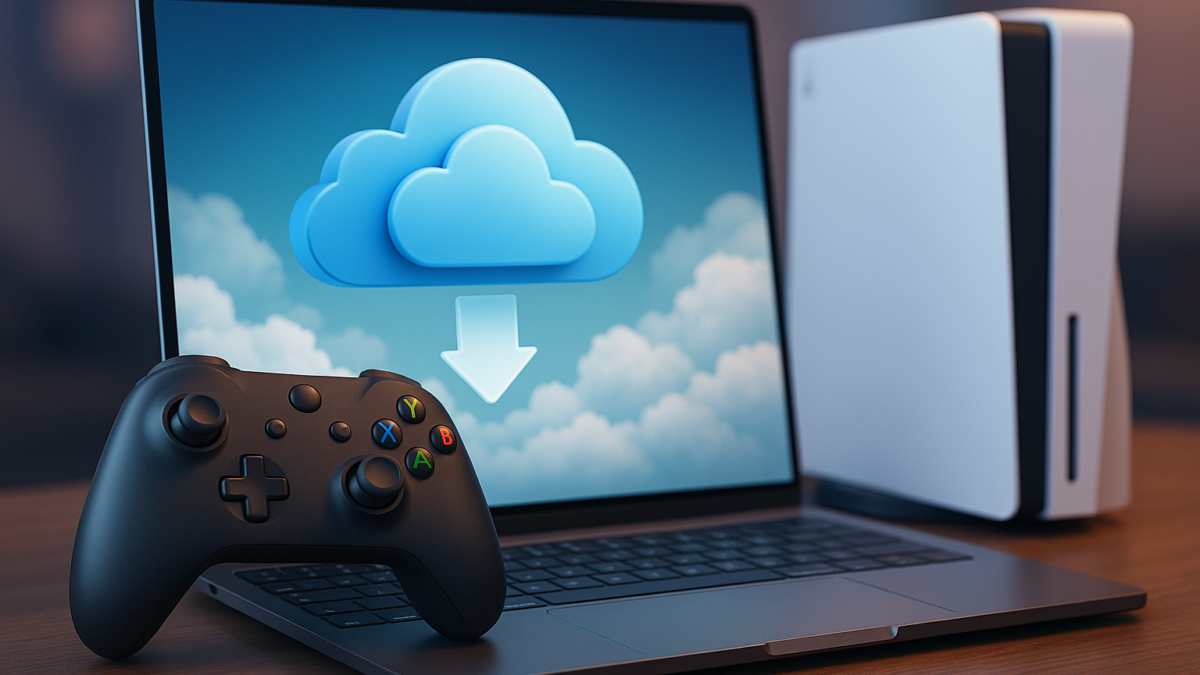Introduction: A Console-Free Future?
For decades, gaming consoles like the PlayStation, Xbox, and Nintendo Switch have defined how we play. But in 2025, an alternative is challenging the console model cloud gaming. By streaming games directly to devices via the internet, platforms like Xbox Cloud Gaming, NVIDIA GeForce Now, and PlayStation Plus Cloud promise console-quality experiences without the expensive hardware.
The question is: can cloud gaming truly replace consoles in 2025—or is it still too early?
What Is Cloud Gaming?
Cloud gaming works like Netflix for games. Instead of downloading or installing a game locally, you stream it in real time from powerful remote servers. All the heavy processing—graphics rendering, physics, and AI—is handled in the cloud. Your device (whether a smartphone, laptop, or smart TV) only needs to receive video and send input commands.
This means:
- No more expensive consoles or GPUs.
- Play AAA titles on low-spec hardware.
- Instant access to massive libraries across devices.
The Current Cloud Gaming Landscape in 2025
1. Xbox Cloud Gaming (xCloud)
Integrated with Xbox Game Pass Ultimate, xCloud offers hundreds of titles on-demand. Microsoft continues to push cloud-first strategies, making Xbox less about hardware and more about an ecosystem.
2. NVIDIA GeForce Now
Known for its flexibility, GeForce Now lets users stream games they already own on Steam, Epic, or Ubisoft Connect. In 2025, its RTX 4080 SuperPOD servers deliver high-performance ray tracing in the cloud.
3. PlayStation Plus Cloud Streaming
Sony has expanded its library to include PS4 and PS5 titles, aiming to complement—not replace—its consoles. It remains a hybrid model, blending physical and cloud.
4. Other Players
Amazon Luna, Shadow, and smaller regional providers are carving out niches, though Google Stadia’s shutdown still haunts the industry as a cautionary tale.
Advantages of Cloud Gaming
✔ Accessibility & Affordability
Play high-end games without dropping $500+ on a console or $1,500+ on a gaming PC.
✔ Cross-Device Gaming
Switch from your phone to TV to laptop seamlessly, with progress synced via the cloud.
✔ Instant Access
No waiting for massive downloads or patches. Games launch in seconds.
✔ Eco-Friendly Potential
Shared cloud infrastructure may reduce e-waste and energy use compared to frequent console upgrades.
Challenges Holding Cloud Gaming Back
Latency & Internet Dependency
Even with 5G and fiber expansion, input lag can ruin fast-paced competitive games.
Game Library Gaps
Not every game publisher supports cloud. Exclusive titles are still tied to console ecosystems.
Ownership Concerns
Cloud services operate on licenses, not ownership. If a game is removed, access disappears—unlike a physical disc or downloaded copy.
Regional Disparities
Rural and developing regions with weaker internet infrastructure are left out of the cloud revolution.
Cloud Gaming vs Consoles: Head-to-Head in 2025
| Feature | Cloud Gaming | Consoles |
|---|---|---|
| Upfront Cost | Low (subscription-based) | High ($500–$600 for consoles) |
| Performance | Dependent on internet + server power | Stable, consistent hardware performance |
| Game Ownership | Subscription access | Buy physical/digital copies |
| Portability | Play anywhere, any device | Limited to console location |
| Latency | Risk of lag | No input lag (offline play possible) |
Will Cloud Replace Consoles in 2025?
The honest answer: Not yet.
- For casual gamers, cloud gaming is increasingly attractive—affordable, accessible, and flexible.
- For hardcore and competitive gamers, consoles (and PCs) still dominate due to performance reliability and ownership.
- For publishers, consoles remain vital for exclusive ecosystems that lock in fans (e.g., PlayStation exclusives, Nintendo franchises).
That said, the balance is shifting. Cloud gaming is no longer just a side experiment—it’s a legitimate pillar of the gaming industry in 2025.
The Future Outlook: Hybrid, Not Replacement
Analysts predict a hybrid model rather than a full replacement. Think of consoles and cloud as coexisting:
- Consoles for hardcore players who demand stability and exclusives.
- Cloud gaming for casual players, mobile-first markets, and subscription enthusiasts.
By 2030, cloud gaming may dominate once internet infrastructure and publisher partnerships catch up. But in 2025, consoles remain safe—for now.
Conclusion: The Console Isn’t Dead Yet
Cloud gaming in 2025 has made huge leaps in affordability, accessibility, and quality. Yet, consoles still offer unmatched reliability, exclusives, and offline play. Instead of asking “Will cloud replace consoles?”—the better question is: how will both evolve together to shape the future of gaming?
Want to stay updated on the biggest shifts in gaming and technology?
Subscribe to iTMunch for weekly insights into cloud gaming, AI, and the future of interactive entertainment.
You May Also Like: From Gated to Ungated: How the Future of Whitepapers Is Redefining B2B Lead Generation





